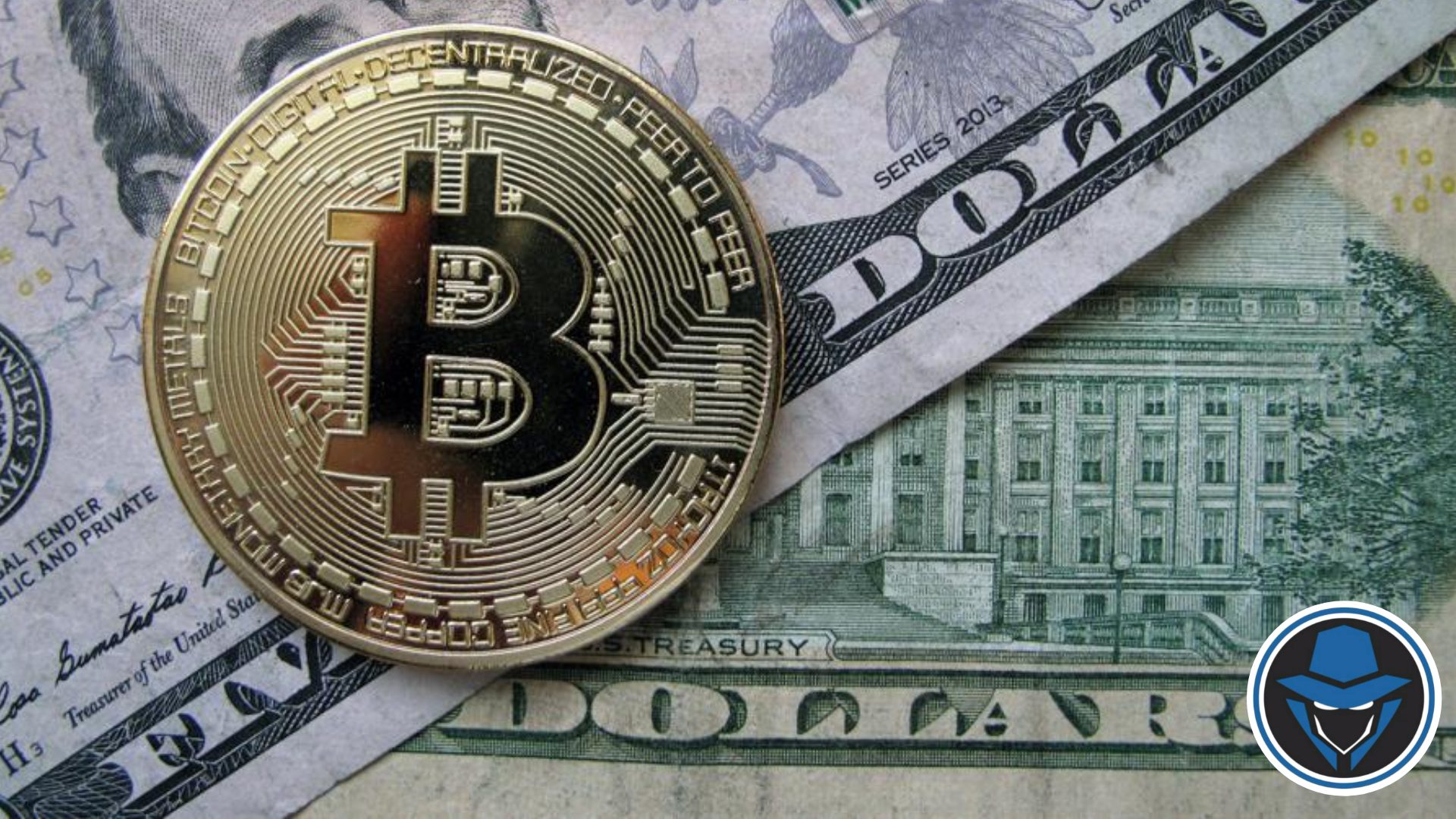When you think of a haven asset, precious metals like gold or silver probably come to mind. It is an investment that people flock to protect themselves from shocks in traditional markets.
The debate over whether Bitcoin is following in the footsteps of these assets continues. In this article, we’ll explore some of the main arguments for and against Bitcoin being a store of value.
Bitcoin offers an efficient way to transfer money over the Internet and is controlled by a decentralized network with a transparent set of rules, providing an alternative to paper money controlled by a central bank. Much has been said about the price of bitcoin. and here we decided to study what the price of a cryptocurrency might look like if it becomes more widespread.
However, it is helpful to save a step first. Bitcoin and other digital currencies have been touted as an alternative to paper money. But what gives at least some monetary value?
Why currencies are valuable?
A currency can be used if it is a store of value, or in other words, if it can be reliably calculated to maintain its relative value over time and without depreciation. In many societies throughout history, commodities or precious metals have been used as legal tender because they were considered to have a relatively stable value.
Rather than forcing people to carry large quantities of cocoa beans, gold, or other ancient forms of currency with them, societies eventually turned to minted currency as an alternative. However, the reason that many examples of minted coins could be used was that they were a reliable store of value, as they were made from metals with long life and little risk of depreciation.
In the modern era, minted coins often take the form of paper money, which does not have the same intrinsic value as coins made from precious metals. It is perhaps even more likely that people are using electronic money and payment methods. Certain types of currency rely on being “representative”, which means that each coin or note can be directly exchanged for a specific amount of a commodity.
However, as countries abandoned the gold standard to ease concerns about federal gold supplies, many of the world’s currencies are now classified as fiat currencies. Fiat currency is issued by the government and is not backed by any commodities, but rather is based on the conviction of individuals and governments that the parties will accept the currency.
Today, most of the world’s major currencies are fiat currencies. Many governments and corporations have concluded that fiat currency is the strongest and least likely to deteriorate or lose value over time.
What makes a good store of value?
To understand what constitutes a good store of value, let’s start by examining what a bad store of value can do. If we want something to last for a long period of time, it goes without saying that it must be durable.
Think about food. Apples and bananas have some intrinsic value because people need food to live. When food is scarce, these items are sure to be very valuable. But that doesn’t make it a good store of value. They will cost a lot less if you store them in a safe for several years, as they obviously decompose.
But what about something inherently valuable, yet permanent? Say, dry pizza? It’s better in the long run, but there is still no guarantee that it will have value. Pizza is produced cheaply from readily available sources. Anyone can flood the market with more pizza, so the value of pizza in circulation will decline as supply exceeds demand. Therefore, for something to retain its value, it must also be rare.
Some people think that fiat currencies (dollars, euros, yen) are a good way to store wealth as they retain value over the long term. But these are a really bad store of value, as purchasing power drops sharply as new units are created (like pizza). You can take your savings and put them under your mattress for twenty years, but they won’t have the same purchasing power when you eventually decide to spend them.
In 2000, $ 100,000 could buy a lot more than today. This is mainly due to inflation, which refers to the increase in the prices of goods and services. In many cases, inflation is caused by an excessive supply of paper money due to the government’s practice of printing more money.
As an illustration, let’s say you own 25% of the $100 billion supply, which is $ 25 billion. Time passes and the government decides to print, for example, an additional $800 billion to stimulate the economy. Your pie share has suddenly dropped to ~ 3%. There is much more money in circulation. It goes without saying that your part does not have the same purchasing power as before.
As with our pizza discussed earlier, making dollars is not expensive. The above can happen within a few days. With good savings, it will be difficult to flood the market with new units. In other words, the piece of the pie should thin out very slowly, if at all.
Taking gold, for example, we know that its supply is limited. We also know that working with him is very difficult. So even if the demand for gold suddenly rises, the point is not to turn on the printer and create more. As always, he needs to be pulled out of the ground. Despite the influx of demand, supply cannot be significantly increased to meet it.
The case of bitcoin as a store of value
Since the early days of Bitcoin, proponents have argued that cryptocurrency is more like “digital gold” than just digital currency. In recent years, this narrative has been taken up by many bitcoin enthusiasts.
Bitcoin is known for its wild volatility. It may seem counterintuitive that an asset that can lose 20% of its value in one day is viewed by many as a store of value. But even with its many falls, it remains the most profitable asset class to date.
Bitcoin VS fiat currencies
1) Scarcity
When Bitcoin was launched in 2009, its developers stipulated in the protocol that the supply of tokens would be capped at 21 million.5 To give some context, the current supply of bitcoins is around 18 million, the rate of release of bitcoins is halved approximately every four years, and it is expected that in 2022, their supply will exceed 19 million. This assumes that the protocol will not be changed. Note that changing the protocol will require agreement on most of the computing power involved in mining bitcoin, which means that this is unlikely.
2) Divisibility
The 21 million bitcoin is significantly less than most of the world’s fiat currencies in circulation. Fortunately, Bitcoin is divisible by 8. The smallest unit, 0.00000001 Bitcoin, is called “Satoshi” after the alias of the developer behind the cryptocurrency. This allows quadrillions of individual Satoshi units to be distributed in the global economy.
Bitcoin has a much higher divisibility rate than the US dollar and most other fiat currencies. While the US dollar can be divided into cents or 1 / 100th of 1 US dollar, a satoshi is only 1 / 100,000,000 of 1 BTC. It is this extreme divisibility that makes the bitcoin shortage possible; If the price of bitcoin continues to gain traction, users with tiny fractions of one bitcoin will still be able to participate in daily transactions. Without any division, the price of, say, $1,000,000 for 1 BTC will not allow the currency to be used for most transactions.
3) Utility
One of the main advantages of Bitcoin has been its use of blockchain technology. Blockchain is a decentralized and trustless distributed ledger system, which means that no party to the bitcoin market needs to establish mutual trust for the system to function properly. This is possible thanks to a well-thought-out system of checks and reviews, which is necessary for maintaining a ledger and mining new bitcoins. Moreover, the flexibility of blockchain technology means that it is also useful outside the cryptocurrency space.
4) Transportability
Thanks to the exchange of cryptocurrencies, wallets, and other instruments, bitcoin can be transferred between parties in a matter of minutes, regardless of the size of the transaction, at very low costs. Transferring money in an existing system can take several days and can be expensive. Portability is an extremely important aspect of any currency. Although it takes a large amount of electricity to mine bitcoins, maintain the blockchain, and process digital transactions, people usually do not have a physical representation of bitcoins in the process.
5) Durability
Resilience is a major concern for fiat currencies in their physical form. A dollar bill can be torn, burned, or rendered unusable. Digital payment methods are not subject to physical harm in the same way. For this reason, Bitcoin is extremely valuable. It cannot be destroyed in the same way as a dollar bill. However, this does not mean that bitcoin cannot be lost. If a user loses their cryptographic key, the bitcoins in the respective wallet may indeed be permanently unusable.
However, Bitcoin itself will not be destroyed and will continue to exist on the blockchain records.
6) Counterfeit
Thanks to a complex and decentralized accounting system, the Bitcoin blockchain is incredibly difficult to counterfeit. To do this, you essentially have to confuse everyone in the Bitcoin network, which is no small feat. The only way to create fake bitcoin is through what’s called double-spending. This refers to a situation where a user “spends” or transfers the same Bitcoin in two or more separate settings, effectively creating a duplicate entry. While this is not an issue with fiat currency – it is not possible to spend the same dollar bill in two or more separate transactions – it is theoretically possible with digital currencies.
However, what makes double-spending unlikely is the size of the Bitcoin network. A so-called 51% attack is required, in which a group of miners theoretically controls more than half of the total power of the network. By controlling most of the entire power of the network, this group could dominate the rest of the network and interfere with the recordings. However, such an attack on Bitcoin would require tremendous effort, money, and processing power, making such a possibility extremely unlikely.
Bitcoin as a digital currency
Many will not hesitate to point to the Bitcoin whitepaper when disagreements arise over this. It’s obvious to them that Satoshi intended to spend bitcoins from the beginning. In fact, it is in the very title of the article: Bitcoin: A Peer-to-Peer Electronic Money System.
The argument suggests that Bitcoin can only be useful if users spend their coins. By accumulating them, you are not helping the adoption – you are hurting them. While Bitcoin has not gained widespread acceptance as a digital currency, its main offering is not based on utility but speculation.
These ideological divisions led to a significant fork in 2017. A minority of bitcoiners wanted a system with larger blocks, which meant lower transaction fees. Due to the increased use of the original network, the cost of a transaction can skyrocket and exclude many users from lower-cost transactions. If the average fee is $ 10, it doesn’t make sense for you to spend coins on a $ 3 purchase.
The forked network is now known as Bitcoin Cash. The original network at the time released its own update known as SegWit. SegWit did increase the block capacity, but that was not its primary focus. It also laid the foundation for the Lightning Network, which aims to facilitate low-cost transactions by pushing them out of the chain.
In practice, however, the Lightning Network is far from perfect. Regular Bitcoin transactions are much easier to understand while managing Lightning Network channels and capacity requires complex learning. It remains to be seen if it can be simplified or if the design of the solution is too complex to be abstract.
Due to the growing demand for block space, on-net transactions are no longer so cheap during peak periods. Thus, it can be argued that not increasing the block size negatively affects the usability of Bitcoin as a currency.
No intrinsic value
For many, comparing gold and bitcoin is absurd. In essence, the history of gold is the history of civilization. The precious metal has been a staple of society for millennia. Of course, after the abolition of the gold standard, it partially lost its dominant position, but it remains an absolute refuge.
Indeed, it seems overkill to compare the network effects of the Asset King with the protocol of eleven years ago. Gold has been revered as a status symbol and an industrial metal for thousands of years.
On the other hand, Bitcoin is not used outside of its network. You cannot use it as a conduit in electronics or turn it into a huge shiny chain when you decide to start your hip-hop career. It can imitate gold (mining, limited supply, etc.), but that doesn’t change the fact that it is a digital asset.
To some extent, all money is a shared belief: the dollar is valuable only because the government says so and society accepts it. Gold is only valuable because everyone agrees. Bitcoin is no different, but those who give it value are still a small group in a larger scheme. You probably had a lot of conversations in your personal life in which you had to explain what it is because the vast majority of people do not know this.
Volatility and correlation
Those who entered Bitcoin early have certainly appreciated their growing wealth by orders of magnitude. For them, this is truly accumulated value – and even more. But those who bought their first coins at an all-time high don’t have that experience. Many suffered heavy losses by selling at any time after that.
Bitcoin is incredibly volatile and its markets are unpredictable. For metals such as gold and silver, fluctuations are negligible compared to them. You might argue that it is too early and that the price will stabilize over time. But that in itself could indicate that Bitcoin is not currently a store of value.
You should also consider Bitcoin’s relationship with traditional markets. Since the inception of Bitcoin, they have followed a steady upward trend. A cryptocurrency has not really been tested as a haven asset if all other asset classes perform equally well. Bitcoin enthusiasts might describe it as “uncorrelated” with other assets, but there is simply no way to know until other assets are hurt and Bitcoin remains stable.
Don’t Wanna Listen and Read to this Article, then you can watch this video and understand about Bitcoin as a store of value:




